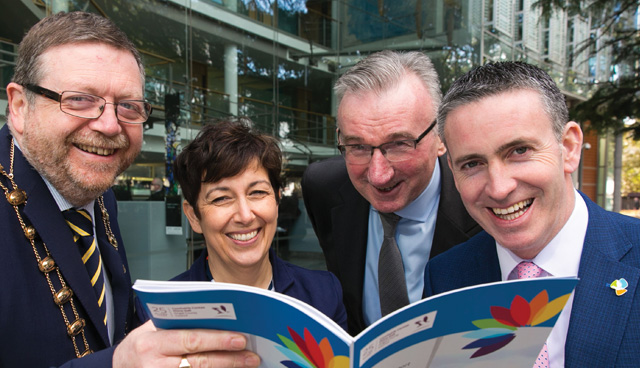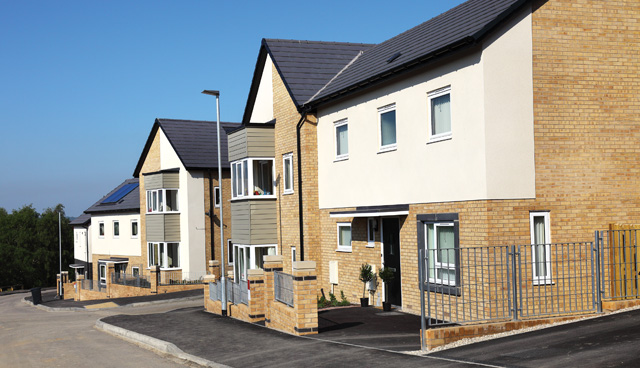
Fingal County Council working hard to deliver to meet the needs of everyone in need of social housing support
17th May 2019
Revised Residential Tenancies Bill: Changes to the rental sector
17th May 2019House prices continue to strengthen


House Prices continue to rise across Ireland with all regions recording a higher average house price in the first quarter of 2019, than at the end of 2018.
This is the first time since the middle of 2016 that every single market in the country saw prices rise and only the third time this decade.
“This is almost certainly a seasonal thing. The nitty-gritty of the Central Bank mortgage rules has accentuated the hot-and-cold seasonal nature of the housing market, explains Ronan Lyons, Assistant Professor of Economics at Trinity College Dublin.
Lyons was commenting on the most recent figures included in the Daft.ie House Price Report.
“Historically, it used to be the case that early in the year and then again in the early autumn, the housing market would pick up; only to be followed in each case by the summer and Christmas lulls.
“The Central Bank rules around exemptions to loan to-income restrictions are based on the calendar year, not a rolling year.
“This means that it is in the interests of both borrowers and lenders to wait until January. The result is a market that is getting used to, at the risk of slightly over-simplifying, a once-a-year jump in prices in the first quarter, after which the market treads water, waiting for a new batch of exemptions.”
Nationally, the average asking price reached its lowest point in the third quarter of 2013 and has risen 59.1 per cent, or just over €97,000, since then. In Dublin, prices reached their lowest point in the second quarter of 2012 and have risen by an average of 74 per cent, or €163,000, since that time. In four Dublin postal districts, prices have doubled in that time. The increase in prices has been smallest in Donegal, where price bottomed out in early 2014 and have since risen by 28 per cent.
The average price paid for a house nationally during the first quarter of 2019 was €261,000. The annual rate of increase in list prices, nationally, was 5.9 per cent during the same period, up from 5.5 per cent in late 2018.
Between December and March, prices nationwide rose by 2.9 per cent, the largest three-month gain since mid-2017. Limerick, county and city, Clare and Tipperary are some of the few places in the country where prices are more than 10 per cent higher than a year previously. There were just over 22,500 properties available for sale nationwide on 1 March 2019. This is 11 per cent higher than a year previously. What’s more, the availability of housing throughout Ireland has improved for 11 of the last 12 months.
So how do these trends shape out on a regional basis? The survey shows that in North City, Dublin the average price paid during the first quarter of 2019 was €350,325. This represents a quarter-on-quarter change of 3.8 per cent and a year-on-year change of 4.6 per cent.
The equivalent figures for the city centre were €339,436, 2.6 per cent and 4.2 per cent. South City averages came in at: €421,555, 3.5 per cent and 4.2 per cent.
In all six major regions of the city, prices rose between December and March, having fallen back in the final three months of 2018. Prices in central Dublin are now more than 100 per cent higher than their lowest point in 2012, while prices in North Dublin are up less than 60 per cent. There were just over 4,900 properties for sale in Dublin in March, up 40 per cent year-on-year. This is the 19th month in a row availability has improved in the capital.
The provinces show similar trends for the first quarter of 2019. Having fallen back September to December, prices across Leinster rose by 2 per cent between December and March. While prices in Longford and Carlow are more than 10 per cent higher than a year ago, in Kildare, inflation is below 4 per cent. There were over 5,600 properties for sale in Leinster in March, a 19 per cent increase on the same date in 2018.
County Louth saw average house prices coming in at €220,272. The quarter-on-quarter change was 2.3 per cent with the year-on-year change amounting to 4.9 per cent. For County Kilkenny, the equivalent figures were €224,161, 1.4 per cent and 4.8 per cent.
Where the province of Munster is concerned, house prices rose in the first quarter of 2019, having fallen during the period October to December last.

In Limerick county the average price paid during quarter one of 2019 was €196,456. The quarter on quarter change was 3.8 per cent. The year-on-year change was 13.4 per cent. For Waterford city, the comparable figures were €181,948, 4.0 per cent and 10.3 per cent.
Not surprisingly, Cork city leads the way in Munster, where house prices are concerned. The average value recorded for the first quarter of 2019 was €282,518, representing a year-on-year change of 8.0 per cent. Meanwhile in Galway city, the average price paid for a house during the period January to end of March 2019 was €300,457. This represents a year-on-year change of 9.9 per cent.
According to the Central Statistics Office (CSO) residential property prices in Ireland increased by 4.3 per cent nationally in the year to February. This compares with an increase of 5.2 per cent in the year to January and an increase of 12.5 per cent in the 12 months to February 2018.
In Dublin, residential property prices rose by 1.4 per cent in the year to February, with house prices rising by 1.1 per cent and apartments by 1.8 per cent. The highest house price growth in Dublin was in South Dublin at 3.1 per cent, while the lowest growth was in Dublin City at 0.9 per cent.
Residential property prices in Ireland excluding Dublin were 7.5 per cent higher in the year to February with house prices up by 7 per cent and apartments by 14.7 per cent. The region outside of Dublin that saw the largest rise in property prices was the Mid-West at 14.1 per cent, while the smallest rise was recorded in the Mid-East at 2.9 per cent.
Given this backdrop, the Central Bank of Ireland has undertaken a study into the way Irish commercial banks are responding to the changes now taking place within the real estate market.
It shows that, despite a substantial reduction in overall lending balances since the Irish financial crisis, the overall level of concentration of the Irish banking system in real estate lending has remained relatively stable at around 70 per cent of total balances.
In addition, Irish banks are more concentrated in real-estate lending than their European peers. This concentration is primarily to residential real estate.
The study concludes that the high degree of exposure to real estate in the Irish banking system underlines the importance of prudent underwriting by the banking system.
It also confirms that the Central Bank’s mortgage market measures help in this regard, by protecting banks and borrowers against a marked loosening of such underwriting. In doing this, the measures serve to strengthen the resilience of a concentrated system.






